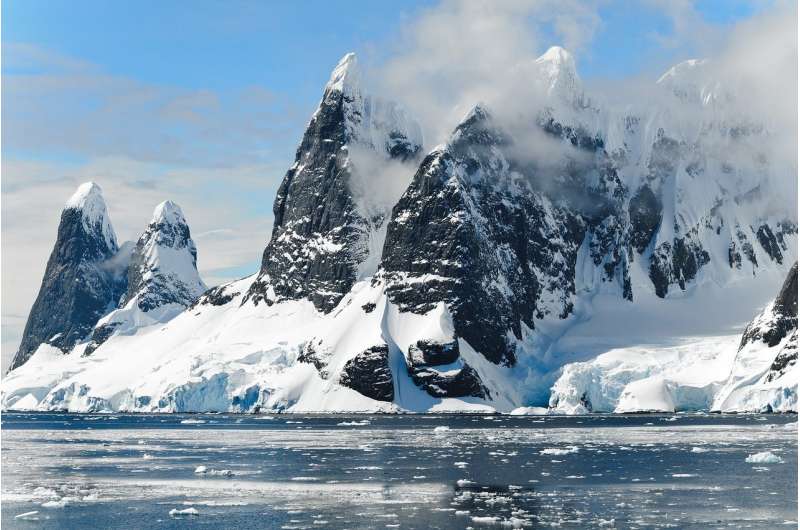February 26, 2018 report
More precise measurements show West Antarctica ice melt accelerating

A team of researchers from NASA and several other institutions in the U.S. and Europe has found evidence of ice melt accelerating in some western parts of Antarctica. In their paper published in the journal Cryosphere, the group describes the new technology they used to study ice melt in Antarctica and what they found.
As the planet continues to warm, and humans continue to pump greenhouse gases into the atmosphere, scientists are finding more climatic, geographic and biologic changes that are taking place. One of those changes is ice melt in the colder parts of the planet, including Antarctica, of course. In this new effort, the researchers used what they describe as cutting-edge technology to process multiple thousands of images from satellites and used the data to chart ice-sheet motion with more precision than other technologies. The images produced by the new system show ice-sheet movement using colors—from reds to yellows—the lighter the yellow, the faster the ice was seen to move.
The researchers noted that several parts of western Antarctica are experiencing acceleration of ice loss, rather than the consistent ice loss seen on the eastern parts of Antarctica. In practical terms, this means that each year, less ice that melts in the summer is replaced by winter snows, leaving less ice in total—and the pace of this process is speeding up. They note also that this is particularly alarming because prior research has shown that much of the ice in the western part of Antarctica is unstable, which means that large swaths could slip into the sea, causing a dramatic and relatively speedy rise in worldwide ocean levels. If the whole western ice sheet goes, they further note, the world could see ocean levels rise as much as three meters.
Some of the areas identified in the new images are the same parts of western Antarctica that have made headlines in recent years as major calving events have occurred, highlighting changes taking place. An increase in calving, the researchers note, can be problematic, placing large regions of ice at increasing risk of melting.
More information: Alex S. Gardner et al. Increased West Antarctic and unchanged East Antarctic ice discharge over the last 7 years, The Cryosphere (2018). DOI: 10.5194/tc-12-521-2018
© 2018 Phys.org



















